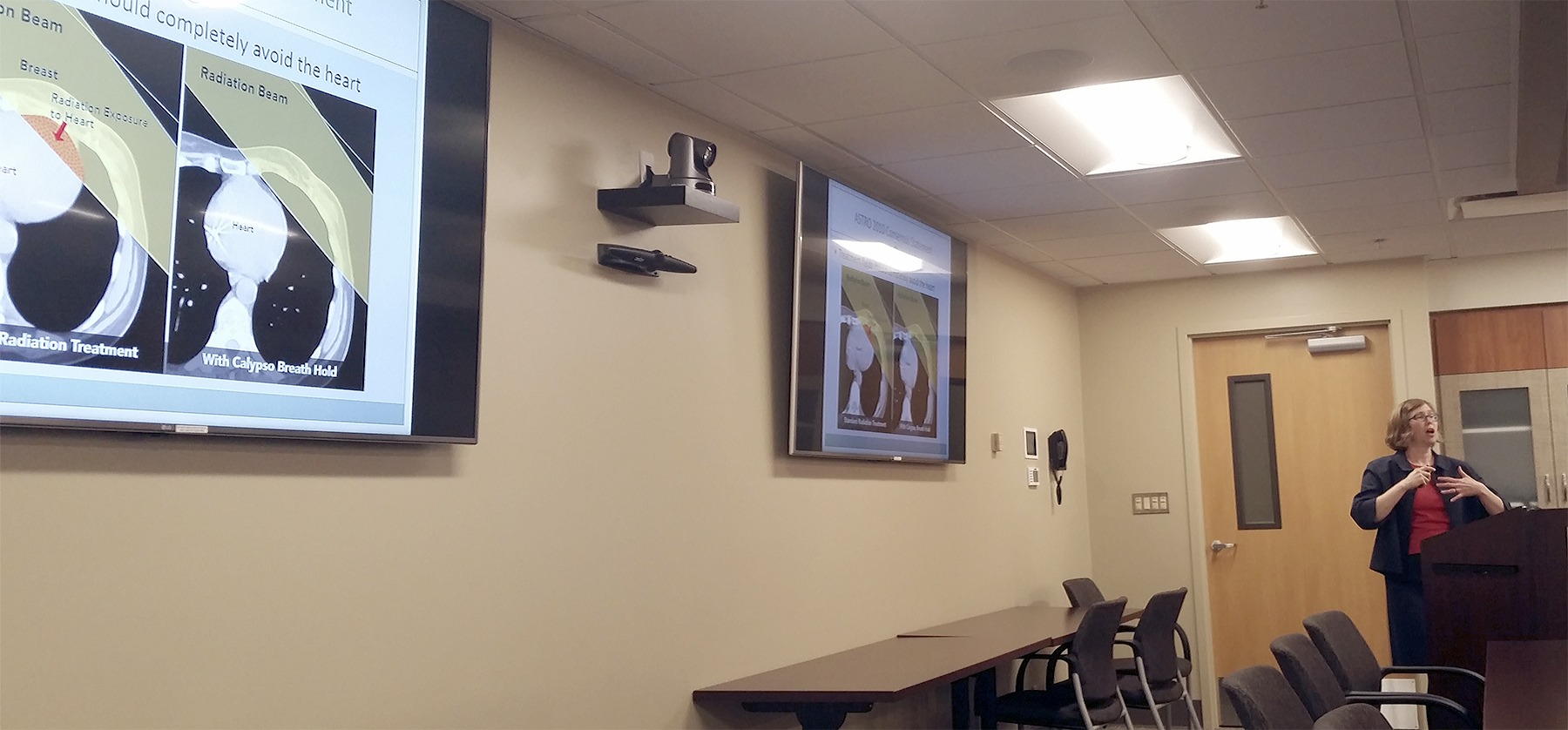MOUNT VERNON – At a recent Doc Talk at Skagit Valley Hospital, three doctors discussed, “Innovations in Breast Cancer Management.”
Cascade Valley Hospital in Arlington is now a partner with Skagit Valley.
“New Insights”
Dr. Ted Kim of the Skagit Valley Hospital Regional Cancer Care Center talked about “New Insights” in breast cancer management.
He talked about ongoing clinical trials that can improve the quality of life for those with breast cancer.
He said medicine has come a long ways since the only way to deal with breast cancer was removal.
“That was the only way to prevent it from coming back,” he said.
There are many other options now, with chemotherapy, anti-hormone therapy, and more.
He mentioned a trial study released in June that shows women on Letrozole not having breast cancer come back long after five years. After 10 years, women on a placebo saw cancer come back 31 percent of the time, while those on Letrozole saw it return 13 percent of the time.
Regarding immunotherapy, Kim said it has been “slow to take hold for breast cancer because the tumor may not cause an immune response.”
But it has worked with triple negative breast cancer.
“The chance of living is better after chemo” and the immune system responds better, Kim said.
He said the targeted therapy can unlock the immune system, helping fight the cancer cells. It can make antibodies to keep immune cells healthy, with minimum side effects.
For example, one woman on Pembrolizumab ended up with “no cancer, which is unheard of,” Kim said.
He said there are many treatment options, and they are individualized for the patient’s needs. “It’s not all one type of disease,” he said.
Kim then completely changed direction, saying he wanted to share some inspiring information.
He said a sad fact in his job is that people die. He said 100 years ago people died quickly, but with medical advances that isn’t the case anymore.
People slowly lose their senses as “They depart from this world.”
He said with people in a “near death” experience, 88 percent say they have visions in a dream state. About 72 percent say they are reunited with those who have died before them. And 59 percent say they are prepared to travel.
Kim said studies show even if a person has no pulse, the brain continues working similar to a waking brain for 17 seconds after death.
“Maybe that means there’s something more than just nothing,” Kim said.
“Mammogram schedules”
Dr. Karen Dec of Skagit Radiology explained the different recommendations eight major health organizations have regarding mammograms.
Dec said she would try to “untangle the confusion of when to start and how often.” That proved to be an impossible task because the recommendations vary widely.
But in general, women ages 40-49 are not recommended to have mammogram screenings as often as in the past.
“There is a lower rate of detection and higher false readings,” Dec said.
But she added in all cases it’s really up to the individual.
“It’s the most-effective way to detect it early and your best chance of survival,” she said.
In women ages 50-69, most of the eight organizations recommend mammograms every two years. Some recommend every year.
“The benefits are clear” for this age group, Dec said.
For women 50-59, there is a 14 percent benefit, and for 60-69 a 33 percent lower risk. Statistics were similar whether the mammogram was done every year or every other year.
In women 70 and older, the recommendation was generally every two years. Many recommend no screening after age 75.
But Dec said for peace of mind, women should have them as often as they want. Women at higher risk, with cancer in their family history, should start getting mammograms earlier and have them more often, Dec said.
“Radiation”
Dr. Michal Whiton, also with the cancer center, talked about hypofractionation radiation. Rather than treating the entire breast, she discussed treating only the part of the breast where the tumor is.
She talked about how doctors were prescribing fewer surgeries in favor of other treatment. “If less surgery is OK, how about less radiation?” she asked.
Over the years patients have been treated with higher doses over a shorter period of time. That was more convenient with fewer treatments and lower cost.
“Lower radiation means less damage to the breast,” Whiton said.
She also talked about a method of giving the patient one heavy dose of radiation after surgery for 20-35 minutes. Those studies are ongoing.



